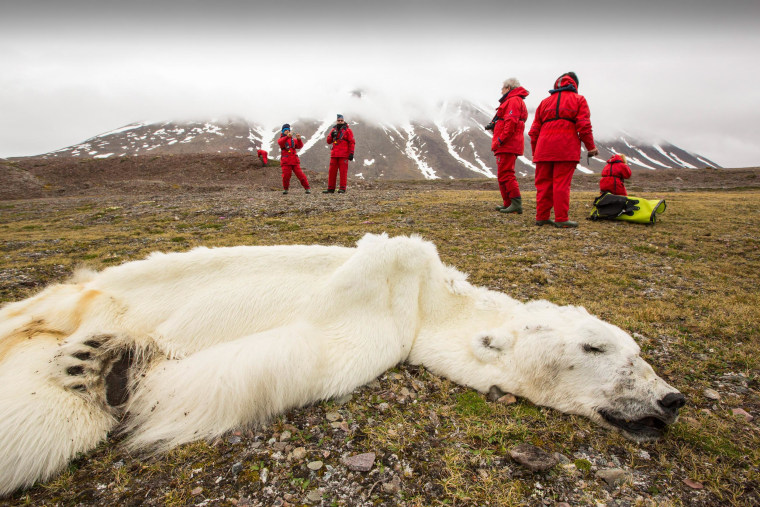The 35,000 walruses recently spotted jammed onto an Alaskan beach were a very visual sign of what wildlife scientists know and worry about: From the Arctic to Antarctica, some species are having to adapt, or die, in the face of the long-term threat of a warming planet and more immediate danger like habitat destruction.
"It's got conservation groups scrambling for solutions," says Lee Hannah, a climate change biology researcher at the nonprofit Conservation International. "We’re really seeing this across the board."
In the Arctic, walruses are spending more time on land since the sea ice they like to feed from has shrunk across the region in recent years. Polar bears also use sea ice to hunt from and their means of adapting to food availability include making bird eggs a bigger part of their diet.
Other examples of species struggling to adapt to climate change include frogs in Central America, lodge pole pine trees in the Rockies, corals in the tropics and flowers in South Africa.
Species sharing areas with humans face an additional problem: trying to adapt by moving around when cities and roads are in the way. "It's a race — the habitat destruction is ongoing and with climate change species need to have the ability to move around in ways that might conflict with human uses," says Hannah.
That concern was echoed by the U.N. Intergovernmental Panel on Climate Change in its 2013 report on adaptation. "Loss of habitat and the presence of barriers to species movement increase the risk of extinctions as a result of climate change," it warned.
"Climate change is … kind of the mother of all stressors."
And climate change on its own has already led some species to seek cooler temperatures at higher elevation or by moving toward the poles, the IPCC reported, in addition to "changes in animal abundance, changes in body size, and shifts in the timing of events, such as earlier breeding in spring."
"Climate change is … kind of the mother of all stressors," says Kurt Johnson, national climate change scientist at the U.S. Fish & Wildlife Service. "It exacerbates nearly all the other stressors."
How to deal with that and other threats is the challenge. Fish & Wildlife's strategy includes "vulnerability assessments" for specific species as well as a "landscape approach" to conservation.
"We're looking at the larger landscape — everything that affects species in that landscape," says Johnson.

Fish & Wildlife can't restore Arctic sea ice, Johnson says by way of example, but it can try to minimize polar bear conflicts with humans — from energy development to shipping — "and that way have some influence in lowering bear mortality and keeping bears around as long as we can."
Hannah is particularly concerned with the 35 regions around the world identified as the planet's "biodiversity hotspots." Together they are just 2.3 percent of the land surface, but contain the most important variety of its species.
"Those are the areas I expect to be hardest hit by this," he says. "There's going to be a lot of rearranging" of ecosystems.
"Nature can do that rearranging" when it's on its own, he adds, but when human development enters into the equation "that movement can't happen and we become concerned with extinction risk."
A possible case in point: The plight of cheetahs. A study by scientists from Queen’s University Belfast, North Carolina State University, the Chinese Academy of Sciences and other universities and wildlife groups reported Thursday that human activity may be the biggest cause of cheetahs’ decline, not competition from other predators, as had been thought.
The number of wild cheetahs has dropped to less than 10,000 from 100,000 a century ago. The study, published in Science, says human-caused habitat loss and hunting of cheetahs’ prey may be forcing the cats to expend significantly more energy to find food — a deficit that many can’t survive.
Arctic species generally don't face intense conflict with humans, but it is no easier having to live with less sea ice.
Still, Hannah is hopeful society can make choices to give species like the walrus a fighting chance.
"Can conservation groups bring sea ice back? No, but maybe we can protect beaches that are closest to their feeding grounds."